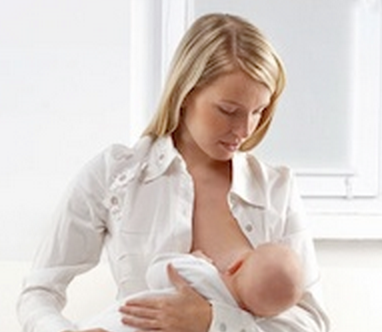by: Kimberly Bowman
Blebs are another common, but potentially panic-inducing, effect of breastfeeding. They appear on the nipple and look like white blisters. They are, in fact, small amounts of milk in the tissue and can be painful but are not worrisome. You may get them, you may not.
The worry returns again to the ever-present subject of proper latch. When nursing the baby, make sure her mouth is open yawn-wide, point your nipple towards her nose and pull her towards you. Do not lean forward otherwise you will end up with a tremendous backache. After she is latched on, check to see that her lips are flanged out like a fish. While 10 seconds of pain is OK, any longer and the suction needs to be broken and another attempt should be made. Improper latch can not only cause you increasingly worse discomfort, but will affect your milk supply as well. The part of the breast that needs to be stimulated for the brain to receive signals to make more milk are located in the areola which is compressed comfortably when the nipple is far enough in the back of the baby’s mouth.
When you notice blebs, continue nursing. Deny your inner primate and do not pick them. We all know that the picking temptation does not wane with age or maturity, but it will not help. Instead, soften them with a warm compress or olive oil. This will help in removal. You may see a bit of hardened milk. As you rise to the challenge of proper latch, protect your nipples with a salve like Lansinoh. This product is pure and safe for baby while providing protection for you. Do not use antibiotic creams.
Finding strange, blister-like bumps on your breast is just one more adventure. Like other bumps, blisters and strangeness that greet us as we move through life, they are part of the experience. You can be sure they are worth it. Just about all of it is.



